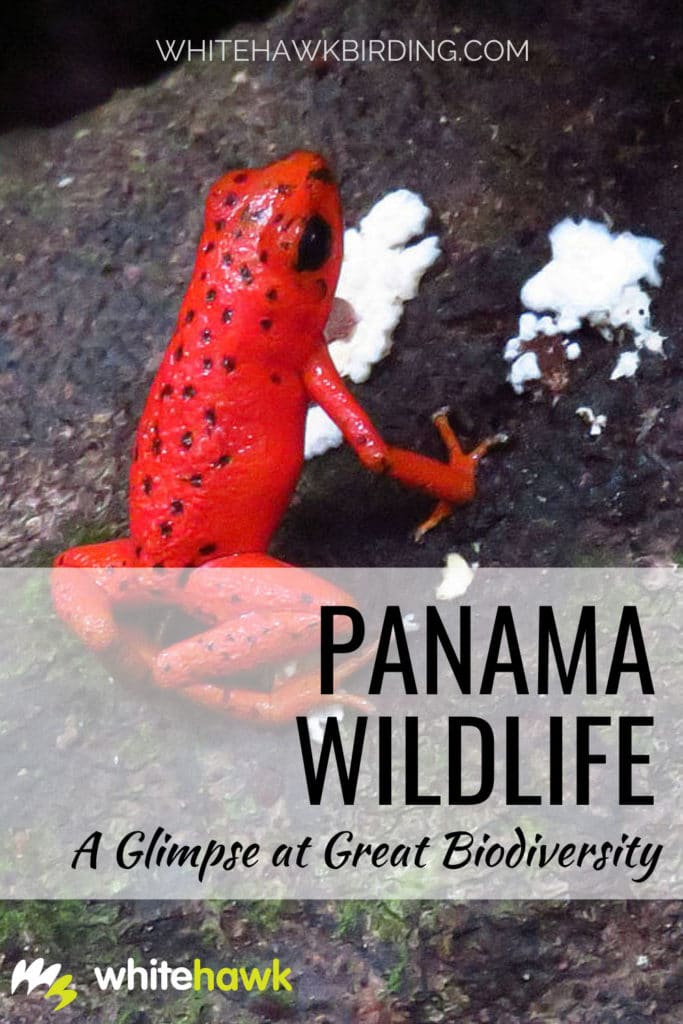The narrow Isthmus of Panama is home to the famous Panama Canal and is nestled between Costa Rica and Colombia. It forms a land bridge between North and South America. It is a hotbed for biodiversity and has the most species recorded of all Central American countries. Panama’s landscape is comprised of low elevation rainforest and coastal zones made up of mangroves, dry forest and fields, foothill montane and highland cloud forests, volcanic ridges, island archipelagos, and open ocean. This great variety of different ecosystems provides homes to thousands of different species of plants and animals. Panama wildlife is what brings many people here, to dive into a full tropical nature watching experience!
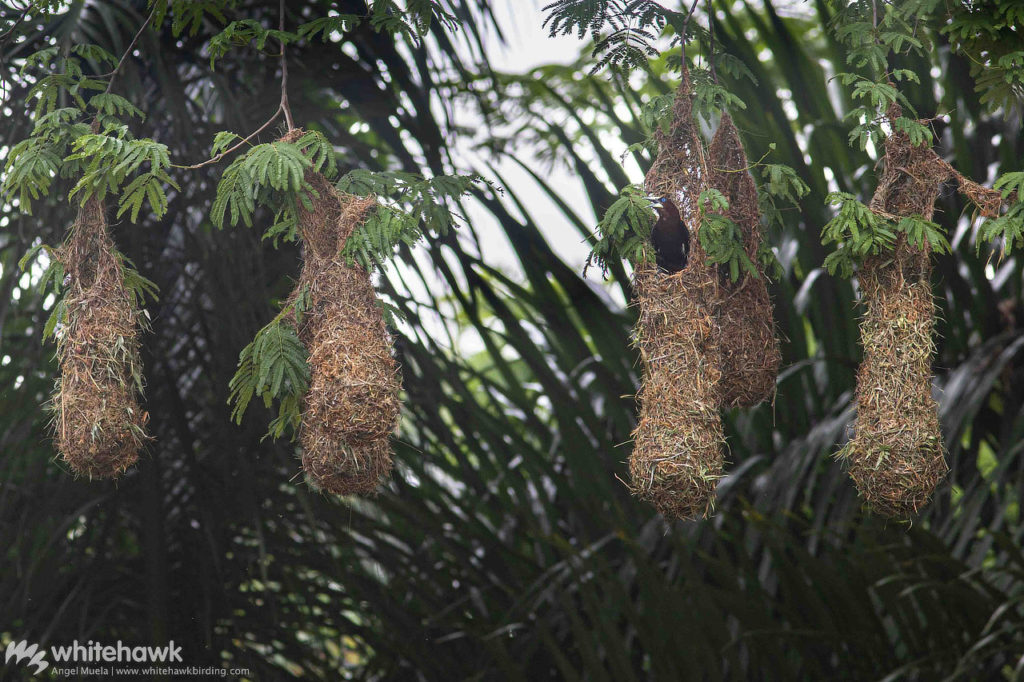
Three Million Years Ago…
The wildlife of Panama has an interesting history. Approximately 3 million years ago, when the land bridge formed, Panama was the site of the Great American Faunal Interchange. This is when animals, such as cats, sloths, and deer from the north migrated south. From the south came armadillos, opossums, and porcupines into the North. Panama became a permanent home for many of these animals during the migration. Fossils of giant sloths, megalodon sharks, corals, primates, rhinoceros-like mammals, saber-toothed cats, and so much more have been found in Panamanian soils. Major investigations have taken place during the excavations of the Panama Canal, revealing to us a world of mass animal migration. All these species add to the great biodiversity that Panama holds today.
Birds – Panama’s Avian Treasures
Panama is home to just over 1000 species of birds – 10% of all bird species found on Earth! For a country the size of South Carolina, that’s an amazing number of birds. The total keeps rising, too, as birders gradually find more species in Panama that are making their way north from South America and south from North America. The most recent new species for Panama is Northern Screamer, spotted in El Real, Darien in May 2020. And we expect more to come. All these new additions contribute to the diversification of Panama wildlife.
Panama has a few endemic species and a good number of regional endemic and range-restricted species. Some of the species we find predominantly in Panama rather than elsewhere include Violet-capped Hummingbird, Snowy-bellied Hummingbird, Golden-fronted Greenlet, Crimson-backed Tanager, and Orange-crowned Oriole. The highly biodiverse region of Darien in eastern Panama is a hotbed for range-restricted species shared only with Colombia, including Black Oropendola and Dusky-backed Jacamar. And of course, eastern Panama is a stronghold for the majestic Harpy Eagle, which was named its national bird in 2002. Likewise, the Talamanca highlands species, including Black Guan and the fantastic Bare-necked Umbrellabird, found only in Panama and Costa Rica.
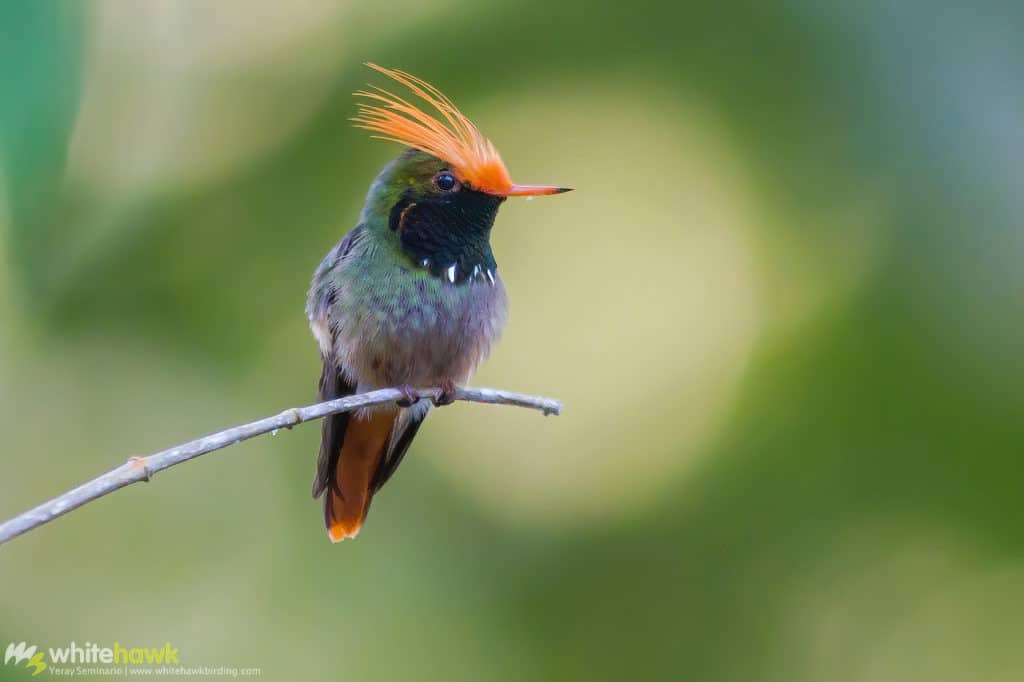
Some of Panama’s most amazing birds are:
- Rufous-vented Ground-Cuckoo, a rare, a roadrunner-like bird of the tropical lowland rainforests. They are almost always seen attending army ant swarms and can be best found at Pipeline Road.
- Pheasant Cuckoo, a large, shy cuckoo of the rainforest understory, with a unique feeding ritual performed at ground-level
- Blue Cotinga, males have electric blue plumage that stands out on the rainforest canopy
- Streak-chested Antpitta, a shy bird of the rainforest understory, described as an “egg with legs”
- Black-crowned Antpitta, the only member of the gnateater family in Central America, an elusive bird of the montane forests of Panama
- Green Shrike-Vireo, more often heard than seen, with its loud three-note song, it blends into the forest canopy with its green and yellow plumage
- Golden-collared Manakin, the males perform complex dances at their leks in the rainforest understory to attract females
- Resplendent Quetzal, considered one of the most beautiful birds on Earth, known for the male’s exceptionally long tail feathers, hails from Panama’s western highlands
- Sapayoa, an unusual, flycatcher-like bird of Panama’s eastern forests, most closely related to Old World broadbills
- Rosy Thrush-Tanager, a denizen of the forest understory, more often heard than seen
- Rufous-crested Coquette, one of Panama’s tiniest and most exquisite birds
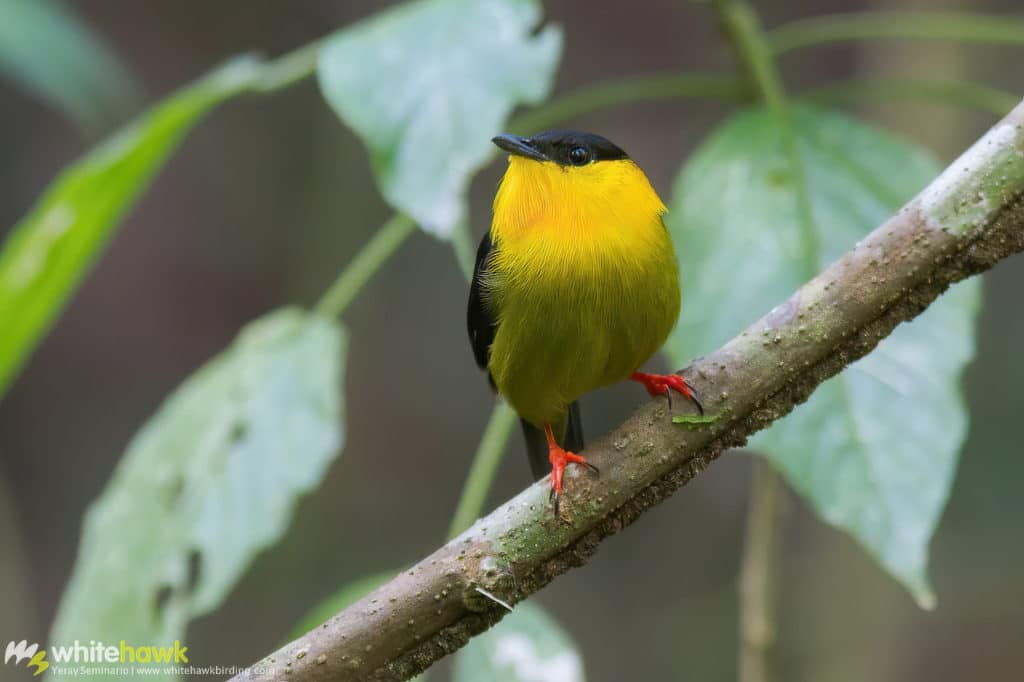
Mammals – Where the Wild Things Roam
When we think of Panama wildlife, rainforest mammals immediately come to mind. With such a great distribution of habitats and ecosystems, it is no surprise that there are over 230 species of mammals found in Panama. In and around Panama City, some of the most commonly encountered mammals here include Central American Agouti, White-nosed Coati, Variegated Squirrel, Hoffmann’s Two-toed and Brown-throated Three-toed sloths, and some primates, including Mantled Howler, White-faced Capuchin, and Geoffroy’s Tamarin. In fact, Panama is one of the best places to find sloths in the wild.
You can also find rodents, capybara, deer, rabbits, opossums, porcupines, kinkajous, raccoons, bats, otters, peccaries, and much more. Panama is home to six species of wild cats – Jaguar, Puma, Ocelot, Margay, Oncilla, and Jaguarundi. They are incredibly elusive and seldom seen, but are indeed here. Some of Panama’s rarer mammals include West Indian Manatee, Baird’s Tapir, Giant Anteater, and even evidence of Spectacled (Andean) Bear has even been documented.
By far the greatest number of species of mammals in Panama are bats. Researchers from the Smithsonian Tropical Research Institute study bats extensively all over the country. It is estimated that 120 species of bats are found in Panama, 10% of the species of bats worldwide! Bats can be difficult to identify, but with some cool technology, researchers can identify them by the frequency of the calls they use to echolocate. Aside from some common species such as the Common Tent-making Bat, having bats in the hand is the best way to know identify these unique mammals visually.
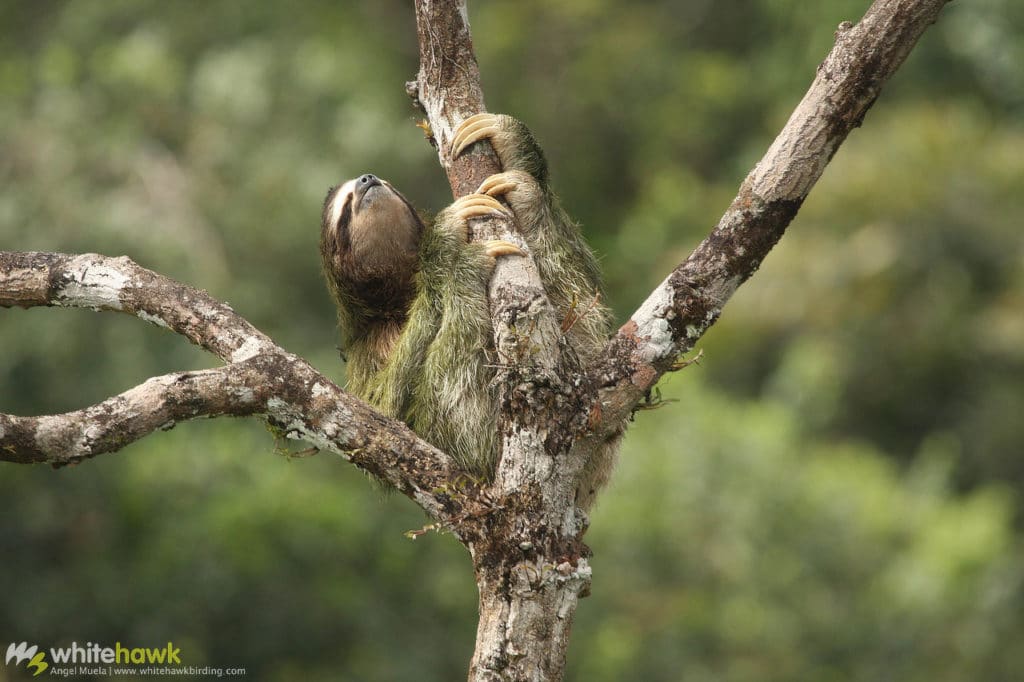
Marine mammals
Panama is also home to a variety of marine mammals and is very popular for whale watching from July to October. Humpback Whales migrate annually through Panama and females give birth to their calves in warm Panamanian waters. These huge cetaceans come surprisingly close to the mainland and can be seen from shore; however, the best way to see one is by getting out by boat into the Bay of Panama. From a safe distance (not to disturb the females with their young) you can watch them breaching, spy-hopping, and pectoral and tail slapping. It is quite the sight and one of the best wildlife watching experiences that Panama has to offer. Other marine mammals that live in Panama’s waters include Blue Whale, Minke Whale, Pantropical Spotted Dolphin, Spinner Dolphin, Common Bottlenose Dolphin, Orca, and Sperm Whale.
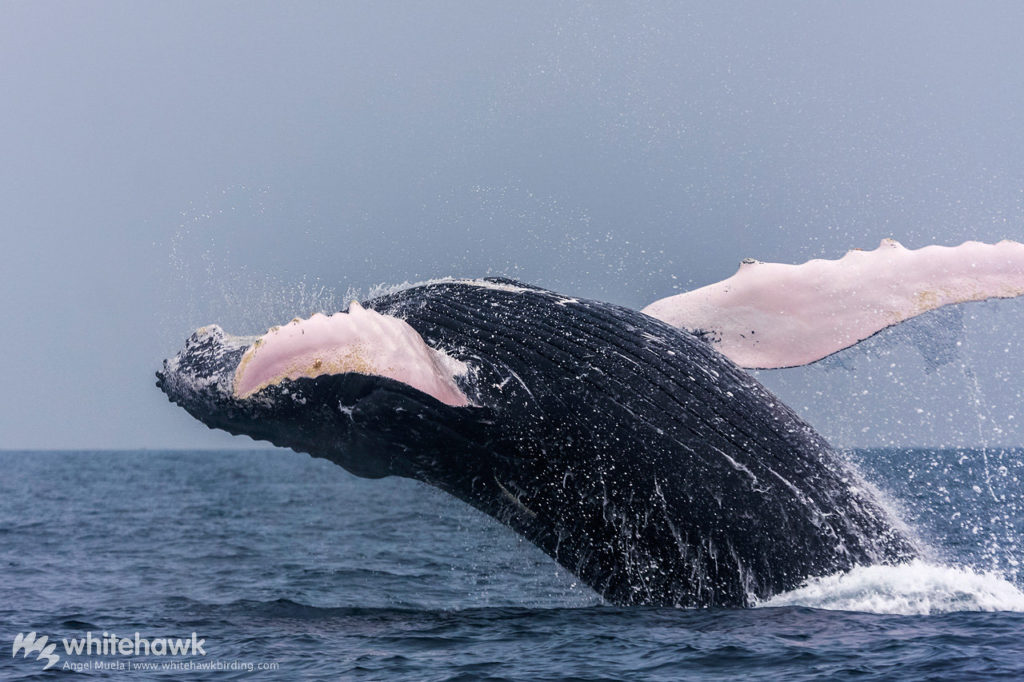
Some of Panama’s most intriguing mammals are:
- Geoffroy’s Tamarin, an attractive little primate (the size of a squirrel) found only in Panama and a tiny range in Colombia
- Lesser Capybara, found along the banks of the Panama Canal, a smaller species than its larger Amazonian cousin
- Greater Fishing Bat, an expert at hunting fish with its uniquely long toes
- Pygmy Three-toed Sloth, a critically endangered endemic species to Panama, found only on Escudos Island near Bocas del Toro
- Rothschild’s Porcupine, one of the smallest species of porcupine in the world and endemic to Panama
- Panamanian Night Monkey, a nocturnal monkey that roosts in tree cavities during the day
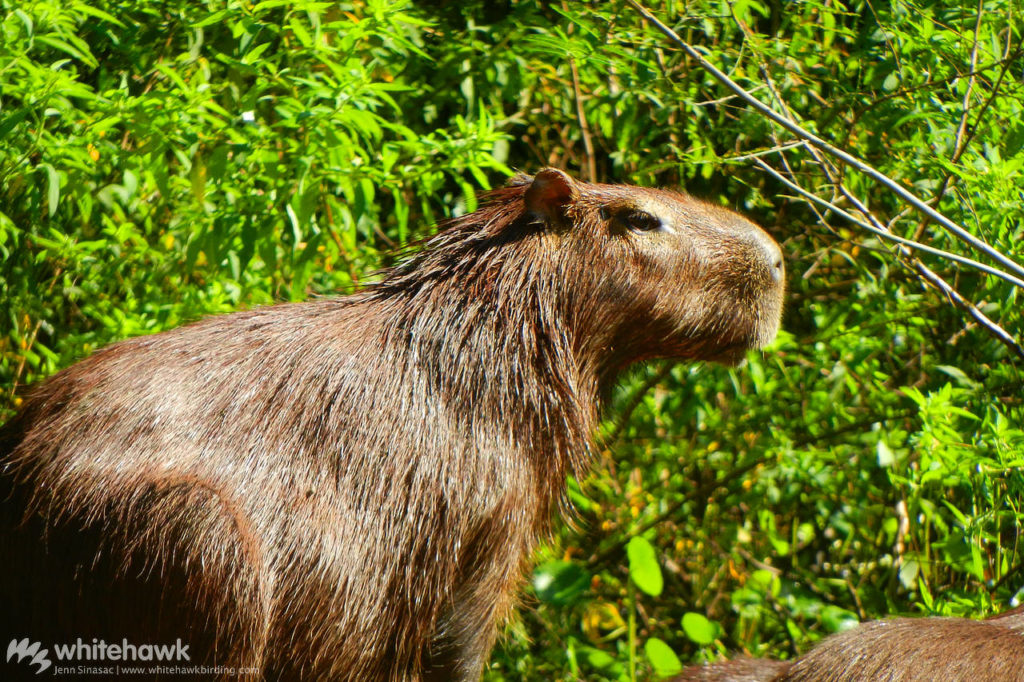
Finding and observing mammals in Panama can be challenging but very rewarding. Unlike large mammals in an African savannah, many rainforest mammals are shy, and a majority of them are nocturnal. However, with a little bit of skill, some luck, and a lot of patience, you can find dozens of species of mammals during your stay in Panama. Watch for mammals tracks as you walk along the forest floor. Get out at night, listen, and watch for cues, and you will be pleasantly surprised how many mammals you may see!
Reptiles – Up Close with Some Scaly Creatures
Like birds and mammals, there is a great diversity of reptiles in Panama. Reptiles thrive in the tropics, and Panama has recorded at least 228 species in the country. Panama has 2 species of crocodilians, 14 turtles (including sea turtles), 3 amphisbaenians, 81 lizards, and nearly 130 species of snakes. Again, the wide diversity of habitats provides homes to Panama’s reptiles.
Snakes are by far the most numerous group of reptiles in Panama, and causes much concern as visitors to Panama fear they will have a close encounter with one of these streamlined animals. However, that is far from the truth, and in fact, Panama’s snakes are very elusive and finding them can be challenging. While nearly two dozen of Panama’s snakes are venomous, a majority are not, and instances of bites are very rare. Snakes, along with all other reptiles, play a very important role in Panama’s ecosystems.
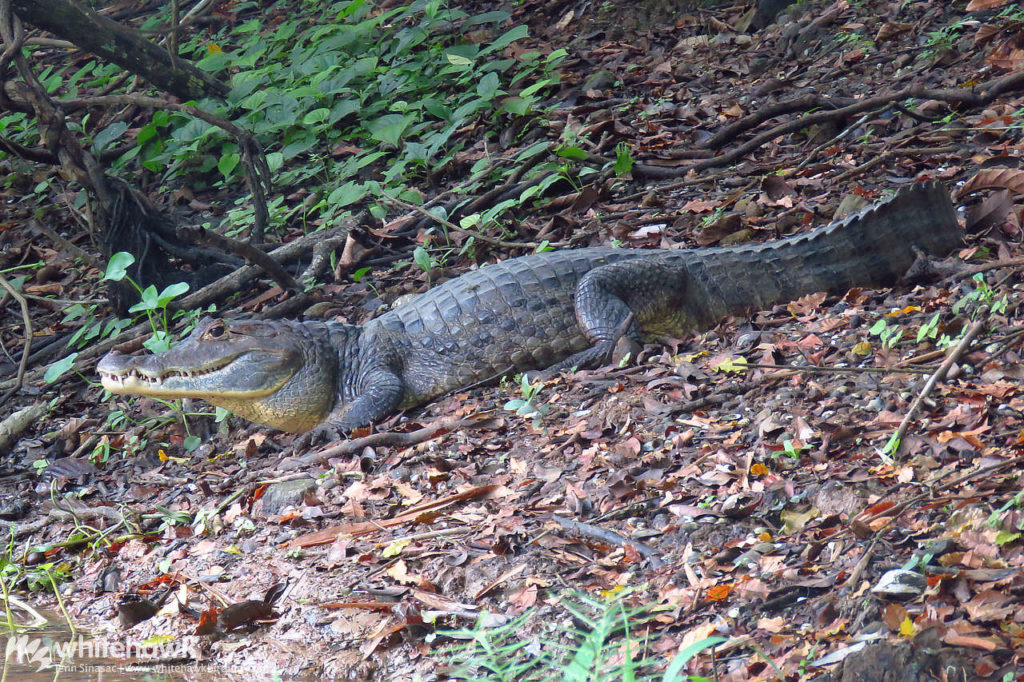
Some of the fascinating reptiles found in Panama are:
- Spectacled Caiman, a smaller cousin of the larger American Crocodile, and lives in forest streams and along large rivers
- Black Spiny-tailed Iguana, a terrestrial species that holds the world’s record for fastest running reptile
- Leatherback Sea Turtle, which lays its eggs on the beaches of Bocas del Toro
- Striped Basilisk (also known as Jesus Christ Lizard), which has the unique ability to run across the surface of the water to evade predators
- Yellow-headed Gecko, a small lizard that lives on buttress roots of trees and manmade buildings
- Speckled Worm Lizard, a seldom-seen fossorial reptile that lacks legs and is blind, rarely emerging to the surface
- Green Vine Snake, a long tree-dwelling snake with bright green scales and a pointed snout, capable of catching birds up to the size of thrushes
- Eyelash Pit Viper, a small, arboreal viper that comes in several different color morphs
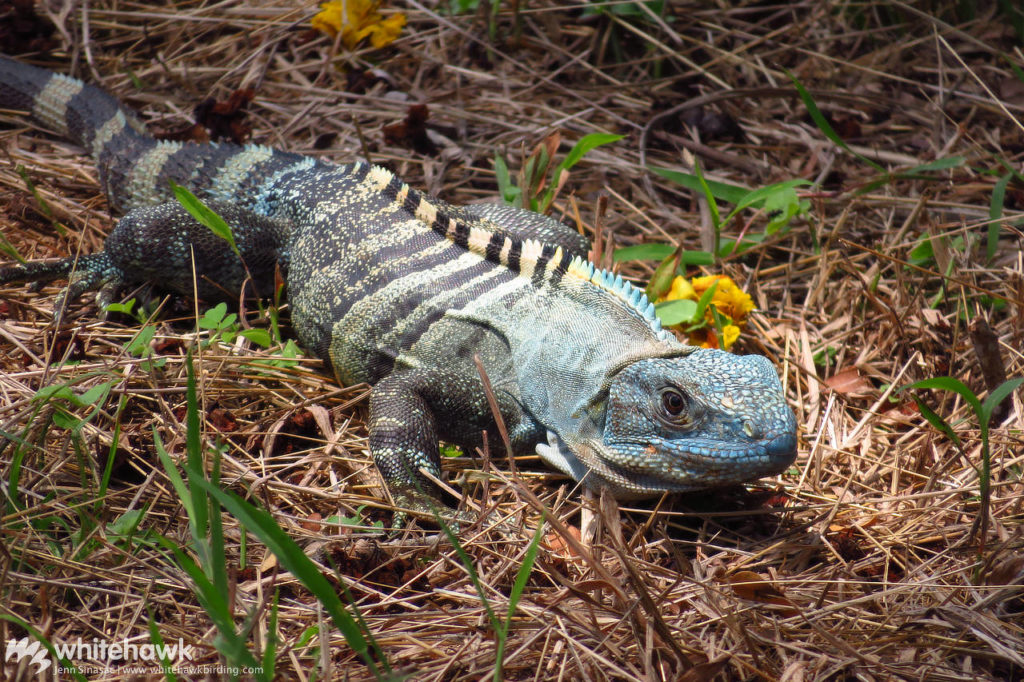
Amphibians – Fantastic Frogs and Sleek Caecilians
Over 200 species of amphibians – frogs, toads, salamanders, and caecilians – are found in Panama. This group of animals has many unique characteristics and although technically terrestrial, has a close affinity with water. Tropical rainforests, since they are so humid and wet, allows a place for amphibians to thrive – even ephemeral puddles and tank bromeliads are used by amphibians to lay their eggs. Amphibians are more prominent during the rainy season. Frogs and toads make up the biggest number of amphibians of Panama’s wildlife, and there are some very eye-catching and unique groups.
Tree frogs – tree frogs are abundant in the rainforests where they can comfortably live out their lives above the forest floor. Many species are very colorful, such as the Red-eyed Tree Frog.
Glass Frogs – Glass frogs are small, delicate frogs that get their name from their transparent undersides. Looking through their glassy skin, you can see their organs and identify them to species.
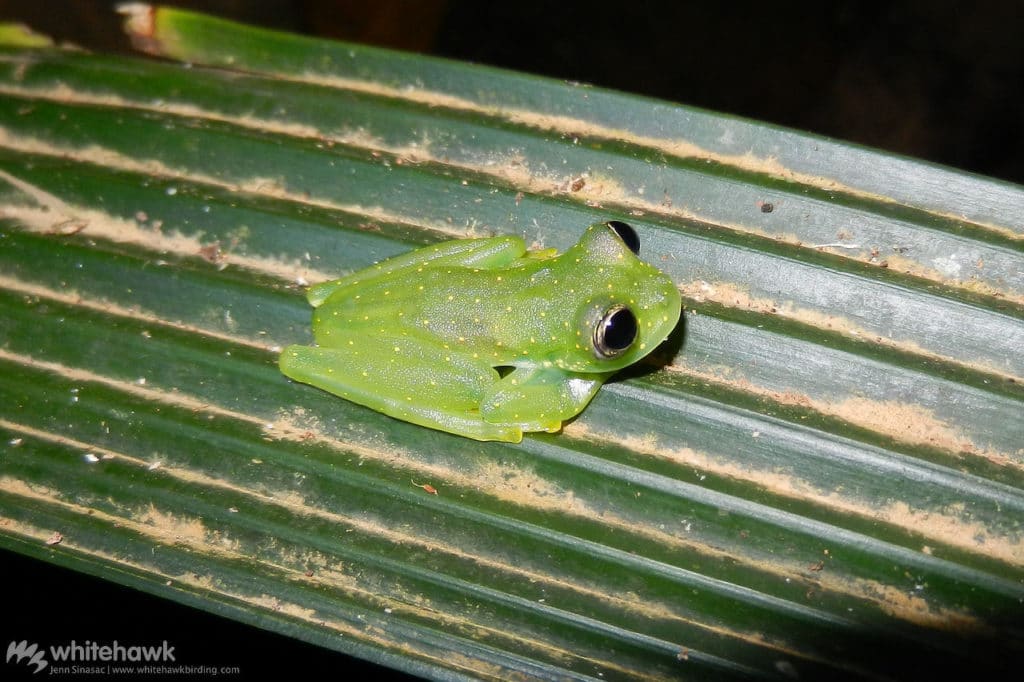
Poison Dart Frogs – A group of small (often tiny!) frogs, popularly known from their bright warning coloration. Bocas del Toro is famous for its poison dart frogs since the species found on the islands have all evolved different colors and markings. They are usually found on the forest floor. However, females climb to great heights in the forest canopy during the breeding season to lay their eggs in bromeliads. Toxicity level varies depending on the species, and toxins are developed from their diet – ants!
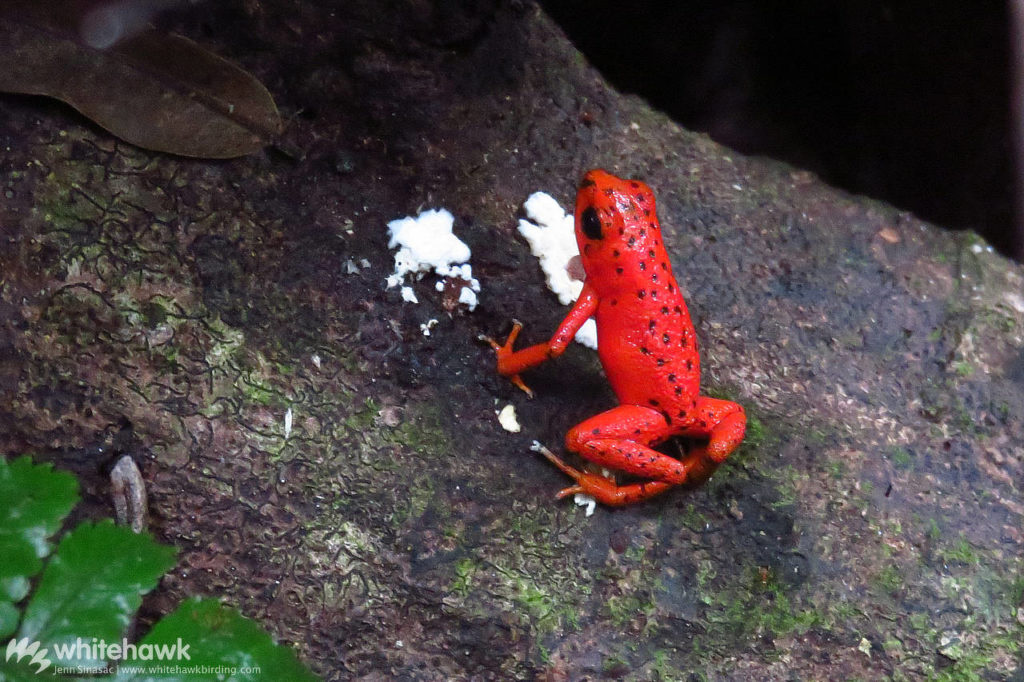
A Special Frog
When talking about Panama wildlife, one of Panama’s national symbols is the Panamanian Golden Frog (Atelopus zeteki). This species is a member of the harlequin frog genus, Atelopus. A Chytridomycosis fungus, which is spreading rapidly across the Americas and other continents, has heavily affected this critically endangered species. Since amphibians breathe through their skin, the fungus permeates over the surface of the frog’s body and blocks the frog’s ability to breathe, effectively killing the population. The Panamanian Golden Frog was once endemic to the foothill forests in a tiny region near El Valle de Anton. Through local and international conservation projects, frogs recovered from the wild have bred well in captive facilities and respond well to special fungicides to treat infected individuals; however, reintroduction back into the wild is risky since the fungus is still prevalent. Panama celebrates the National Golden Frog Day on August 14th every year.
Butterflies, Insects & Arthropods – A World of Discovery
Panama is home to an estimated 1800-2000 species of diurnal butterflies and skippers. This is approximately 10% of the global diversity of butterflies, an estimated 15,000-20,000 species. Furthermore, researchers estimate there are around 16,000 moth species in this tiny country. Each family of butterflies is well-represented in Panama. While lepidopterans (butterflies and moths) are some of Panama’s most visible insects and arthropods, the diversity here is great across this major class of animals.
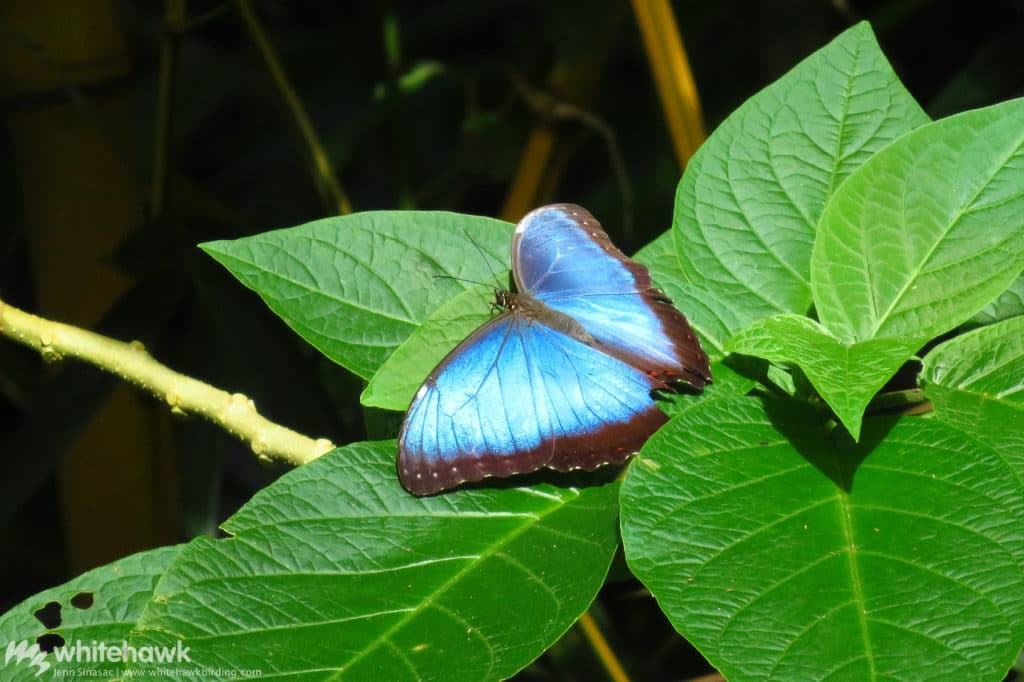
But Panama is home to so much more than just butterflies. Panama wildlife also includes other insects such as beetles, katydids, wasps, and true bugs. Arthropods of all kinds – spiders, harvestmen, centipedes, millipedes, scorpions, and even crabs, can be found in good diversity in Panama.
It would take a lifetime to learn about Panama’s amazing insects and arthropods, but here are just a few of our favorites:
- Common Morpho, males patrol their territories along forest trails and forest edges in search of females and intruding males
- Paula’s Clearwing, one of the clearwing butterflies, lacks colorful scales over most of its wings, leaving them clear like glass (they are also known as glasswings)
- Leaf-footed Bug, a colorful insect with flashy flags on its legs
- Wax-tailed Planthoppers, a relative of cicadas, have long, white waxy secretions that extend off their abdomens
- Orchid bees, group of bees of the tribe Euglossini who are generally solitary by nature and are beautiful iridescent greens and blues. They specialize in pollinating primarily orchids.
- Bullet ant, a fascinatingly large ant, but with a potent sting as its name suggests
- Forest millipede, commonly seen walking through the leaf litter of the rainforest floor with dozens of pairs of segmented legs. When threatened they curl into a ball and release a chemical defense that smells like almonds!
- Panamanian Red Rump Tarantula, a shy ground-dwelling arachnid that burrows underground and sets a trap at the entrance of its den.
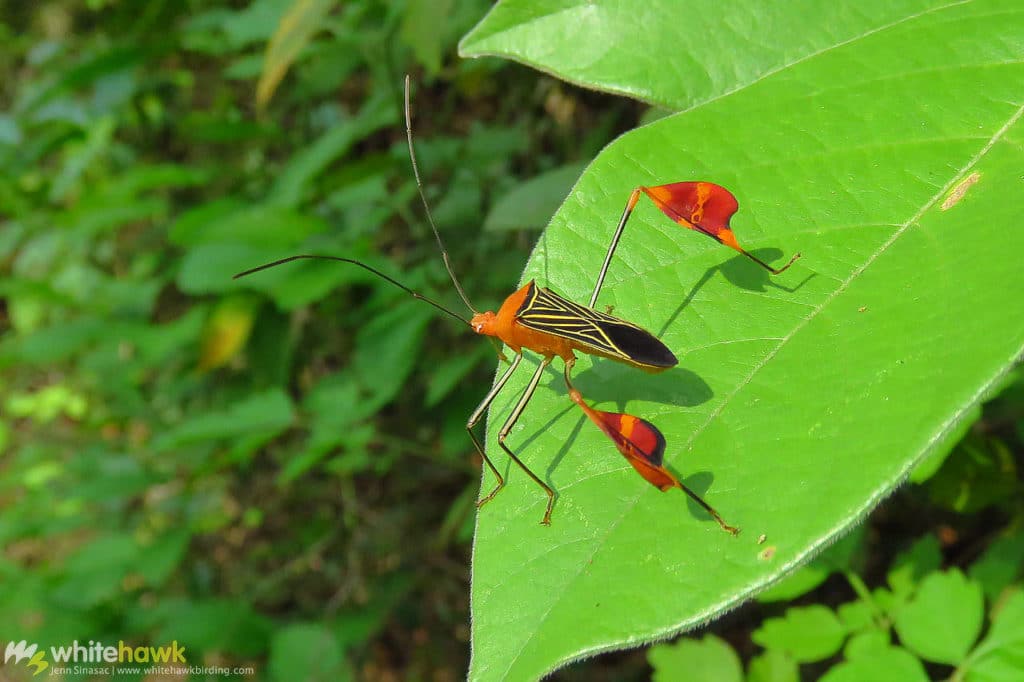
Plants – Forest Foundations
Palms, orchids, ferns, bromeliads, trees, lianas, vines, flowering plants, mosses, grasses… just a few groups of the incredible diversity of plants that make up Panama wildlife. There are approximately 10,000 species of plants in Panama, which include 1200 species of orchids and 1500 species of trees. Beautiful flowering heliconias, gingers, orchids, and other flowering plants adorn the forest understory throughout most of the year. Towering rainforest trees such as Cuipos and Ceibas (kapok) emerge above the forest canopy. Approximately 44% of Panama is forested, consisting of lowland humid rainforest, Pacific coastal dry forest, mangroves, moist montane forest, and highland cloud forest.
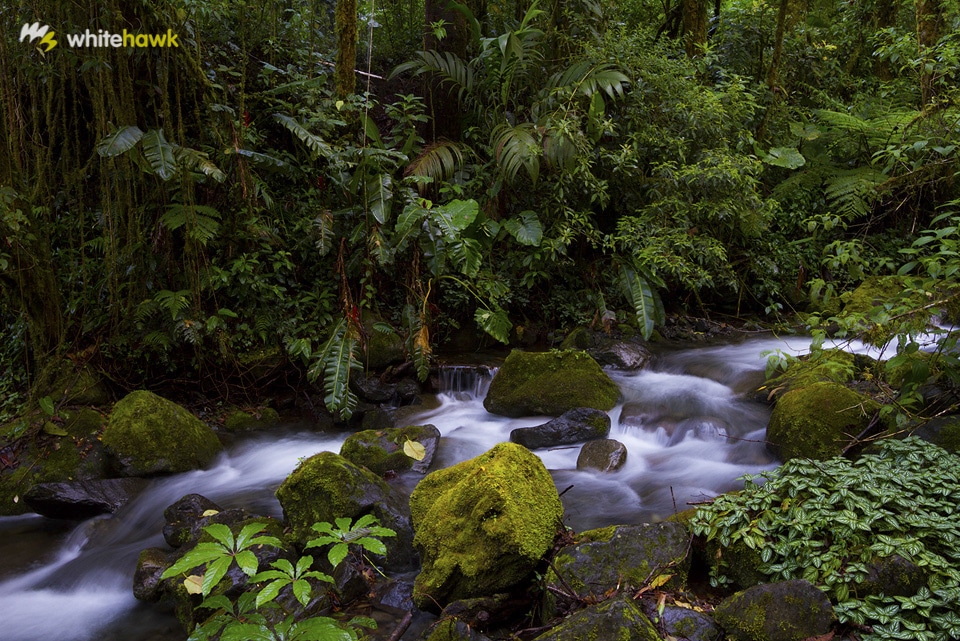
Science & Conservation – Ensuring the Future of Panama Wildlife
This small country presents convenience and accessibility to scientists and biologists to study Panama’s wildlife from border to border, coast to coast, and beyond. Panama is the home base of the Smithsonian Tropical Research Institute (STRI). The headquarters are located in Panama City, and they have field stations throughout the country in a myriad of different ecosystems on and even off the mainland. Panama’s small size and strong gradients between environments make it an ideal location to study Neotropical wildlife. Learn more about the work that STRI does here.
With great biodiversity comes the need to conserve it. Especially in an ever-changing world with increasing human pressures on the environment. Local and international conservation projects cover a wide variety of Panama’s wildlife with a drive and passion to ensure the protection and survival of the great biodiversity here for many generations to come. Here are some of Panama’s notable conservation projects in action. If you are interested in supporting conservation in Panama, click on their websites to find out more.
Yaguará Panamá – Jaguar conservation in Panama
Panamerican Association for Conservation (APPC) – Wildlife rescue (with a focus on sloths) and environmental education
CREA – Conservation through Research Education and Action – rainforest conservation and ecological literacy
Fundación Rapaces y Bosques de Panama (Raptor and Forests of Panama Foundation) – Research, environmental education, and community participation for conservation. Focus on Harpy Eagle conservation; affiliated with The Peregrine Fund.
Panama Amphibian Rescue & Conservation Project – rescue and captive breeding of critically endangered amphibians in Panama to assess sustainability for reintroduction into the wild
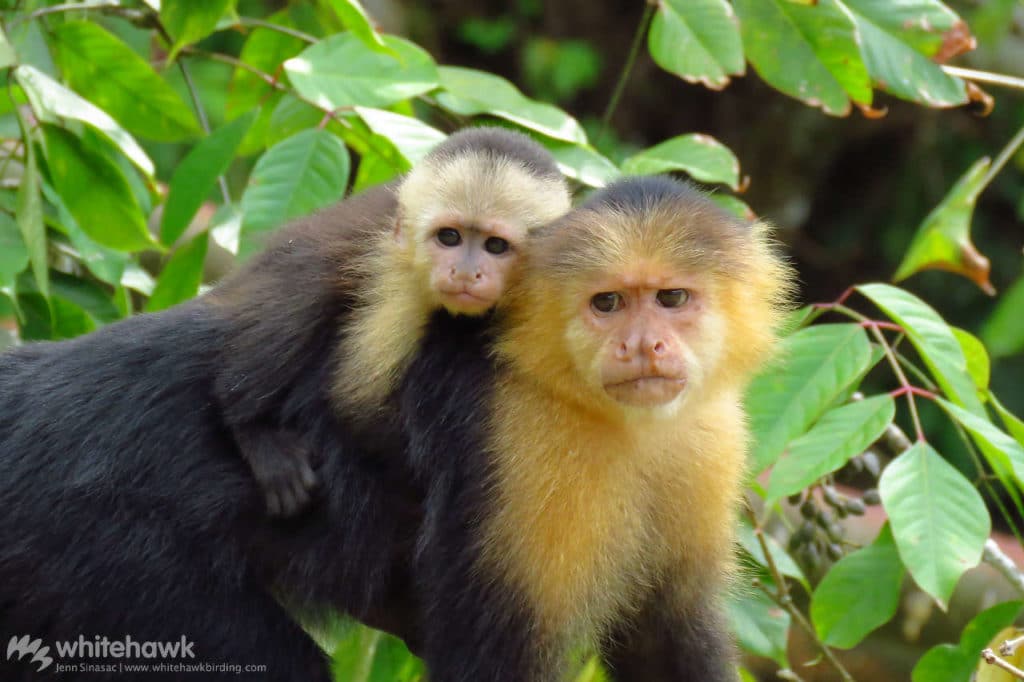
Wildlife of Panama – Come Experience it for Yourself!
Panama wildlife is what inspires us! From howling monkeys to enormous forest eagles, collaborative ants to towering trees. Every individual has its place in our ecosystem. We learn so much from the wildlife found in Panama and we can’t wait to share it with you. Come experience it for yourself! A half or full day trip into the rainforest of Panama can give you the opportunity to see many amazing animals and plants. Or for a more in-depth experience, join one of our multi-day tours, exploring different habitats and seeing hundreds of species. We know you will be inspired, too!

